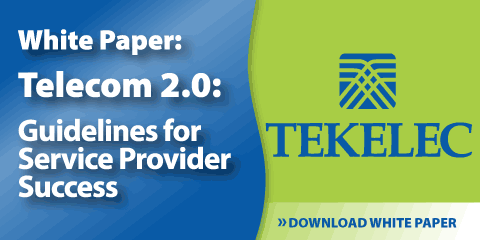
article page
| 1
| 2
| 3
| 4 |
competitiveness, globally, and that competitiveness can be improved, as well as an overall need for public-private cooperation for growth.
Likewise, Hardik Bhatt, CIO for the City of Chicago, mentioned the public safety, health and welfare, education, and other implications of broadband growth. Like Chopra, Bhatt underscored the need for a smart, secure communications infrastructure.
In addition, there were a few keynotes that were interesting, but may have slightly missed the mark for an audience made up of telecom execs. Richard Cotton, VP and General Counsel for NBC Universal, engaged in a pre-formed Q&A session in which he spoke of the myriad problems of piracy. He mentioned that Hulu is a great success story, and an example of a situation in which content went from being pirated and viewed on sites like YouTube, to one in which content was sent through legitimate channels. However, a room full of executives already bracing for the potential negative impacts of net neutrality legislation probably don’t see Hulu as being any less of a threat to their business model than YouTube. If anything, some execs may see Hulu-type over-the-top applications as being MORE dangerous as they actually duplicate much of the home TV viewing experience while completely side-stepping the traditional delivery channels. Hulu is capable of making subscribers drop paid TV altogether, opting for a standalone data connection. Could the same be said for YouTube?
|
|
Piracy is a problem. However, some consideration of the audience would have been wise. |
|

incorporating the broadband capability that many of them could easily possess. There’s a wealth of benefit awaiting CSPs who connect broadband and video in a way that provides a seamless user experience between the two. Rogers touched on this, but the topic is deep enough for its own conference track.
In short, the keynotes covered a nice breadth of topics. They were generally ‘safe’, as keynotes tend to be. However, they were a solid offering and a promising component of SUPERCOMM.
Expo:
Before we talk about the 2009 Expo, let’s talk about a little backstory on SUPERCOMM.
In August of 2000, a few months after SUPERCOMM 2000 wrapped up in Atlanta, the official attendance numbers were released. These numbers revealed the extent to which that event had been an unmitigated success. 53,260 attendees had made their way to the event, an increase of almost 25% over the previous year.
2001’s event was almost as successful, still boasting over 50,000 attendees. We all know that things went south in the telecom sector around that time, and SUPERCOMM’s numbers reflected these pains. The event’s
|
|
|
|

Cotton’s point was well taken: Piracy is a problem. However, some consideration of the audience would have been wise.
The same goes for Tom Rogers, President and CEO of TiVO. While he had many interesting things to say, he could have spent a little more time underscoring what would have been the single most relevant point for the telco executives in the room: Current video offerings are woefully inadequate at
|
|

attendance dipped to 37k after the telecommunications industry’s crisis, and settled around 25k for its mid-decade shows.
Then came USTA and TIA’s parting of ways for the 2006 show season, with TIA hosting GLOBALCOMM in Chicago and USTA hosting TelecomNext in Las Vegas. In 2007 and 2008, the groups reunited and put together NXTComm, first in Chicago and then in Las Vegas.
article page
| 1
| 2
| 3
| 4 |
|
|





